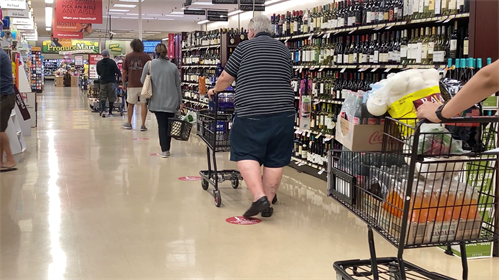Welcome to “Restructuring the Retail Experience,” Teleperformance’s latest three-part series of articles that explores the many trends and changes the retail industry in the United States has been implementing, as the world slowly adapts to a post-COVID-19 environment.
Retail---as with many other industries--slowly treads on a challenging path, as retailers and physical stores continue to navigate around the impact brought about by the coronavirus pandemic. With businesses keen on getting back on track while the world fully embraces living in a new normal, physical stores in most countries have been slowly reopening with a renewed attempt to streamline operations in order to adhere to local safety regulations, and to adapt with the many needs and changing demands of today’s customers. In my case, I’ve observed many interesting changes that are currently taking place across physical stores in the USA, most of which are the direct results of living in a new normal where health and safety are of the utmost importance. Here are a few of them:
New Store Layouts: Stores are changing the flow and layout of goods and items. Some have created COVID-specific areas that carry the most desired items to facilitate and speed up process, while others put these items of high demand at the back to make customers wander around stores, and hopefully buy on impulse.
Don’t stand so close to me becomes a battle cry: Respecting others’ physical space has been viewed as a common courtesy in a pre-COVID-19 environment, but today, it has become mandatory for everyone’s safety. As a result, supermarkets and stores are taking lessons from theme parks: now, supermarkets have arrows and directions for consumers to follow, creating new logistics and people placement guidelines. Lines marked on the floor encourage social distancing and limit physical capacity at many venues. People placement or spacing becomes important like product placement.

Don’t stand so close to me: Floor markings on a supermarket allow social distancing for shoppers (Credit: Supermarketnews)
Less SKUs, Less Stock, and Less is More: From a consumer perspective it appears that consumer product companies are focusing now less on abundance of SKUs as a result of Covid-19. Nowadays, I am noticing less choices when I go to the supermarket, and I have to confess that for some of the items that have been previously missing on my last grocery run--I am thrilled when I find it finally and it might not be from my previously favored brand. In a way, this teaches us to be grateful for the products we have, as was the case when my daughter was thrilled for finding chocolate chip dough! Food Dive dissects this new “less is more” concept currently being practiced among retailers in the USA-- a concept that encourages a dialogue about how consolidating production around fewer SKUs could lead to a more efficient supply chain.
Another observation is that some items disappear as quickly as they are put on shelves. There is this perception that inventory levels are low for many items, and that the whole idea of just-in-time logistics might be forever altered.
My Home is My Cocoon: Since we are mostly at home, spending on household items has increased in importance. That DIY home improvement project that was once found at the bottom of one’s to-do list is suddenly getting attention and a boost because of the pandemic. Retailers selling wellness products and activities have also experienced an increase in sales because of countless individuals cocooning inside their homes: a study by Research and Markets showed that yoga equipment saw a 154% growth during the coronavirus outbreak. COVID-19 has also amplified the demand for “clean beauty” and wellness products.
Next time on this series, I’ll focus on how the retail industry is allowing its physical stores to embrace the digital aspects of serving consumers, and how technology has played a part in ensuring the safety and protecting the health of workers, consumers, and employees. Keep an eye out for it soon!
